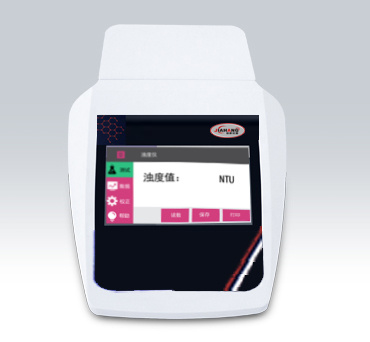March 11, 2025
Tag:
First, policy background
In order to strictly implement the Environmental Protection Law of the People's Republic of China and the Water Pollution Prevention and Control Law of the People's Republic of China, effectively prevent and control ecological environmental pollution, effectively improve the quality of the ecological environment, and standardize the monitoring of surface water environmental quality, The "Technical Specification for Surface Water Environmental Quality Monitoring" HJ 91.2-2022 formulated by the Ministry of Ecology and Environment has been officially implemented since August 1, 2022. The standard comprehensively standardizes the key contents of surface water environmental testing such as location and sampling, monitoring items and analysis methods, monitoring data processing, quality assurance and quality control, and original records, and is suitable for manual monitoring of surface water environmental quality such as rivers, lakes, reservoirs and channels.
In the pre-treatment process of surface water total phosphorus monitoring, it is necessary to treat the in-situ sampled water and record the turbidity value, and the on-site measuring instrument also includes turbidity measuring equipment. Turbidity is an important index to measure the quality of natural water, drinking water and industrial water. Suspended solids and colloids such as soil, silt, fine organic matter, inorganic matter, plankton in water will make the water turbidity and produce turbidity. The higher the turbidity value, the more turbidity the water, so turbidity detection is of great significance to water quality monitoring.
Second, instrument recommendation
The fully automatic turbidimeter JH-Z500 from Shanghai Jiahang Instrument Co., Ltd. is designed to meet the needs of surface water environmental quality monitoring. It has many advanced features, which can effectively improve the efficiency and accuracy of monitoring work.

1. Measurement principle: The advanced scattering and transmitted light joint measurement principle is adopted. This principle integrates the information of scattered light and transmitted light, which can measure water turbidity more accurately and effectively reduce measurement errors compared with a single measurement method.
2. Light source system: equipped with a highly stable LED light source, the emitted light wavelength is accurately controlled at 860nm ± 30nm, which meets the requirements of relevant standards for turbidity to be included in the wavelength of light. The light source not only has high luminous efficiency, but also has a long service life, which can ensure the long-term stable operation of the instrument and reduce the measurement deviation caused by the light source problem.
3. Detection unit: Built-in a variety of commonly used detection units, including NTU (diffuse turbidity unit), FTU (ISO standard), EBC (beer turbidity), ASBC (beer chroma), etc., to facilitate data recording and analysis in different scenarios, to meet diversified monitoring needs.
4. Measuring range: The measuring range covers 0.00-1000NTU, and can automatically switch the measuring range according to the turbidity of the water sample. In the low turbidity range (0.00-10.00 NTU), the measurement accuracy can reach ±0.02NTU; In the medium and high turbidity range (10.01-1000NTU), the measurement accuracy is ± 2%FS (full scale error), ensuring that high precision measurement results can be provided in different turbidity intervals.
5. Data processing and storage: The instrument has a built-in high-performance processor, with powerful data processing capabilities. It can display real-time measurement data, measurement time, measurement times and other information, and can automatically store at least 1000 groups of historical data, which is convenient to query past monitoring data at any time. The format of data storage is standardized, which facilitates subsequent data export and analysis.
6. Calibration function: automatic calibration and manual calibration two modes. The automatic calibration function can be automatically calibrated regularly according to the preset time interval to ensure the long-term stability of the measuring accuracy of the instrument; Manual calibration criteria facilitate the operator to calibrate the instrument at any time according to the actual situation, and further improve the accuracy of measurement.
7. Operation interface and display: Equipped with 4.3-inch color touch screen, the operation interface is simple and intuitive, and the graphical design is easy for users to quickly get started. The screen has a backlight function, even in low light environment, can clearly display the measurement data and operation menu, easy to use in the field.
8. Power supply mode: Support a variety of power supply modes, including AC 220V mains power supply, built-in rechargeable lithium battery power supply and USB power supply. After the built-in lithium battery is fully charged, it can work continuously for more than 8 hours to meet the needs of long-term monitoring in the field; USB power supply is convenient for use in the scenario where there are USB devices such as computers, increasing the flexibility of instrument use.
9. Protective performance: The instrument shell is made of high-strength engineering plastic material, with good waterproof, dustproof and shock-proof performance, and the protection level reaches IP65. It can adapt to a variety of harsh field environments, such as heavy rain, dust, etc., to ensure stable operation in complex surface water environment monitoring sites.
3. Testing process
3.1 Water sample collection
Professional water sampling equipment is used to collect water samples at surface water monitoring points such as rivers, lakes, reservoirs and channels in accordance with relevant standards and specifications. Ensure that the collected water samples are representative and can truly reflect the water quality of the monitoring area.
3.2 On-site turbidity measurement
1. Turn on the automatic turbidimeter JH-Z500 to preheat, and enter the measurement interface after the instrument is stable.
2. Use the collected water sample to wash the measuring pool of the instrument 3-5 times to avoid residual impurities affecting the measurement results.
3. Inject the water sample into the measuring tank to ensure that the water sample is full of the measuring tank and free of bubbles. Click the measurement button, the instrument will automatically start the measurement, and the turbidity value of the current water sample will be displayed after a few seconds.
4. According to the quality control requirements, the same water sample is continuously measured for 3 times, and the interval of each measurement is not less than 30 seconds. The instrument automatically calculates the relative deviation of the three measurement results. If the relative deviation does not exceed 5%, the median value is taken as the turbidity value of raw water and recorded. If the relative deviation exceeds 5%, it needs to be measured again until the requirements are met.
3.3 Sample pretreatment (method determined according to turbidity value)
1. Non-tidal river section: If the turbidity of raw water is 200 <NTU ≤ 500, transfer the water sample to a clean precipitation container for gravity sedimentation, and then carefully absorb the upper water sample for subsequent total phosphorus monitoring after standing for 60 minutes; If the raw water turbidity NTU> 500, put the water sample into the centrifuge, set the speed to 2000r/min, centrifuge for 2 minutes, and take the upper water sample.
2. Tidal river reach: When raw water turbidity NTU > 200, centrifugal sedimentation method is used to centrifuge the water sample at a rotating speed of 2000r/min for 2 minutes, and the upper water sample is taken for subsequent analysis.
3.4 Data recording and transmission
After the measurement is completed, the instrument automatically stores the turbidity measurement data in the internal memory, and the data storage format is standardized, which is easy to query and manage. The operator can view the historical data through the instrument's touch screen, or transfer the data to a computer or other data management platform via USB, Bluetooth or Wi-Fi. Ensure data integrity and accuracy during data transmission to prevent data loss or errors.
4. Summary of instrument advantages
The automatic turbidimeter JH-Z500 has obvious advantages in surface water environmental quality monitoring. Its advanced measurement principle and high precision measurement performance can accurately reflect the change of water turbidity. Rich detection units and automatic range switching functions, convenient for measurement in different scenarios; Powerful data processing, storage and transmission capabilities to facilitate data management and analysis; A variety of power supply methods and high protection performance make it suitable for various field environments and meet the on-site needs of surface water environmental quality monitoring. With these advantages, the JH-Z500 has become a powerful tool for environmental quality monitoring personnel to carry out surface water environmental quality monitoring work efficiently.


Contact Us
Tel: (+86) 400 610 1188
WhatsApp/Telegram/Wechat: +86 13621645194
+86 15021993094
Follow Us:




 Pharma Sources Insight July 2025
Pharma Sources Insight July 2025


